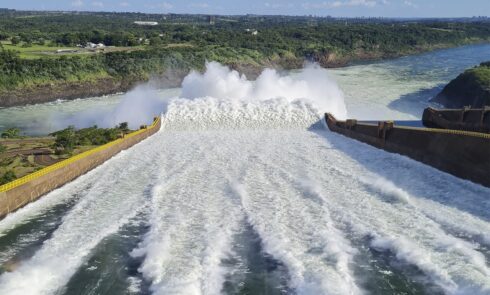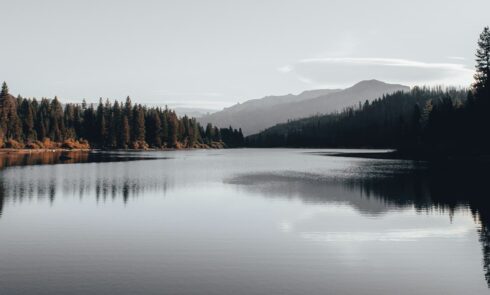About 30% (11 × 1015 m3) of all fresh water on Earth is stored as groundwater. The water measured as groundwater is more than 100 times the amount collected in streams and lakes. Most groundwater has been collected over the years in vast aquifers located below the earth’s surface.
Aquifers are gradually renewed by precipitation, with a normal recharge rate of 0.1% to 3% per year. Assuming a normal energy recovery rate of 1%, this leaves only 11 × 1013 m3 of water available globally each year for sustained use. Currently, groundwater aquifers provide about 23% of the water used worldwide (USGS 2003). The water supply system for U.S. agribusiness is heavily dependent on groundwater, with 65% of the water in the water supply system being pumped from aquifers.
Population development has expanded agricultural water systems, and other uses of water include mining groundwater assets. In particular, the rate of uncontrolled withdrawal of water from aquifers is faster than the normal rate of energy. Between 1950 and 1990, this uncontrolled withdrawal caused the water table to drop by more than 30 meters in some parts of the United States.
Groundwater overdraft worldwide is estimated to be about 2 × 1011 m3 , or significantly higher than the normal rate of recovery. For example, the boundary of the Ogallala Aquifer, which lies beneath parts of Nebraska, South Dakota, Colorado, Kansas, Oklahoma, New Mexico, and Texas, has declined by about 33% since about 1950. Withdrawals from the Ogallala are occurring three times faster than its recharge. Water is being withdrawn from aquifers more than ten times faster than the rate of recovery in some parts of Arizona.
Similar problems exist all over the world. For example, in the agronomically fertile Chenaran Plain in northeastern Iran, the water table has been dropping by 2.8 meters annually since the late 1990s. Water abstraction in Guanajuato, Mexico, has caused the water table to drop by 3.3 meters annually.
The rapid consumption of groundwater poses a real risk to the water supply of rural areas of the world, especially to the water supply system. In addition, when multiple aquifers are mined, the ground surface area tends to sink, making it impossible to recharge the aquifer.


